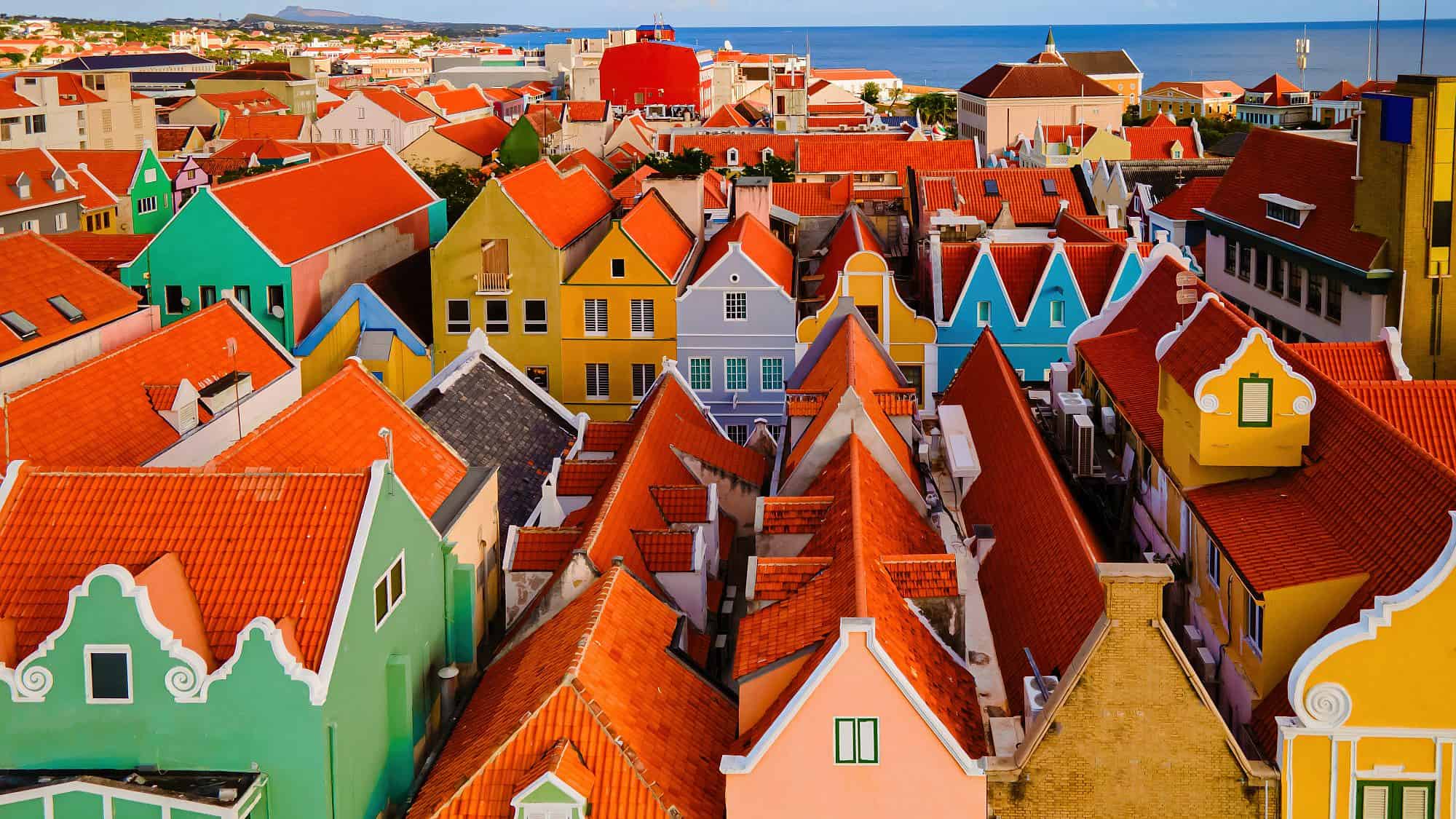When the Hamas terrorist attacks occurred in Israel on Oct. 7 and war immediately broke out, the plans of hundreds of b’nai mitzvah students worldwide intent on traveling to Israel to celebrate their major life-cycle events were suddenly and unexpectedly put on hold or canceled.
Like other bat mitzvah candidates her age, Gabriella (“Gabi”) Kittrie, 13, had been studying with her religious-school instructor, Sarah Roark, at Congregation Beth El, a Conservative synagogue in her hometown of Bethesda, Md. With the help of her instructor, she was preparing her d’var Torah for her assigned parshah, Vayechi, the last of the verses in the book of Genesis.
Four years earlier, her older brother Ari, now 17, had celebrated his milestone event at the Western Wall (Kotel) in Jerusalem with their parents, Orde and Elizabeth Kittrie, as well as several extended Israeli family members and friends in attendance.
Even though the parents are now divorced, they had been jointly planning a similarly meaningful and spiritually uplifting celebration at the Kotel for their daughter.
But when British Airways canceled their tickets to Israel in early November, they sprang into action.
“We thought to ourselves, where can we go that’s as meaningful as the Kotel, but can accommodate us on such short notice?” recalled Elizabeth.
‘It looked beautiful’
Both avid students of history, the two remembered that the oldest synagogue in the Western Hemisphere is located on Curaçao, a small Caribbean island controlled by the Netherlands and situated very close to Venezuela in South America.
Congregation Mikvé Israel-Emanuel is nestled in the bustling port city of Willemstad, a formerly walled city and a favorite stop for cruise ships for more than a half million tourists each year.
“We researched it, and it looked beautiful,” Orde noted. “So we reached out, and the Mikvé Israel team was exceptionally gracious and helpful.”
One of the features of the island is the vibrant palette of colors that mark its historic architecture. The bright canary yellow and tan building that houses Mikvé Israel-Emanuel traces its history back to 1730, although the congregation existed for several decades before that to 1651. Several of its present members can trace their Jewish family roots back more than a dozen generations to that time.
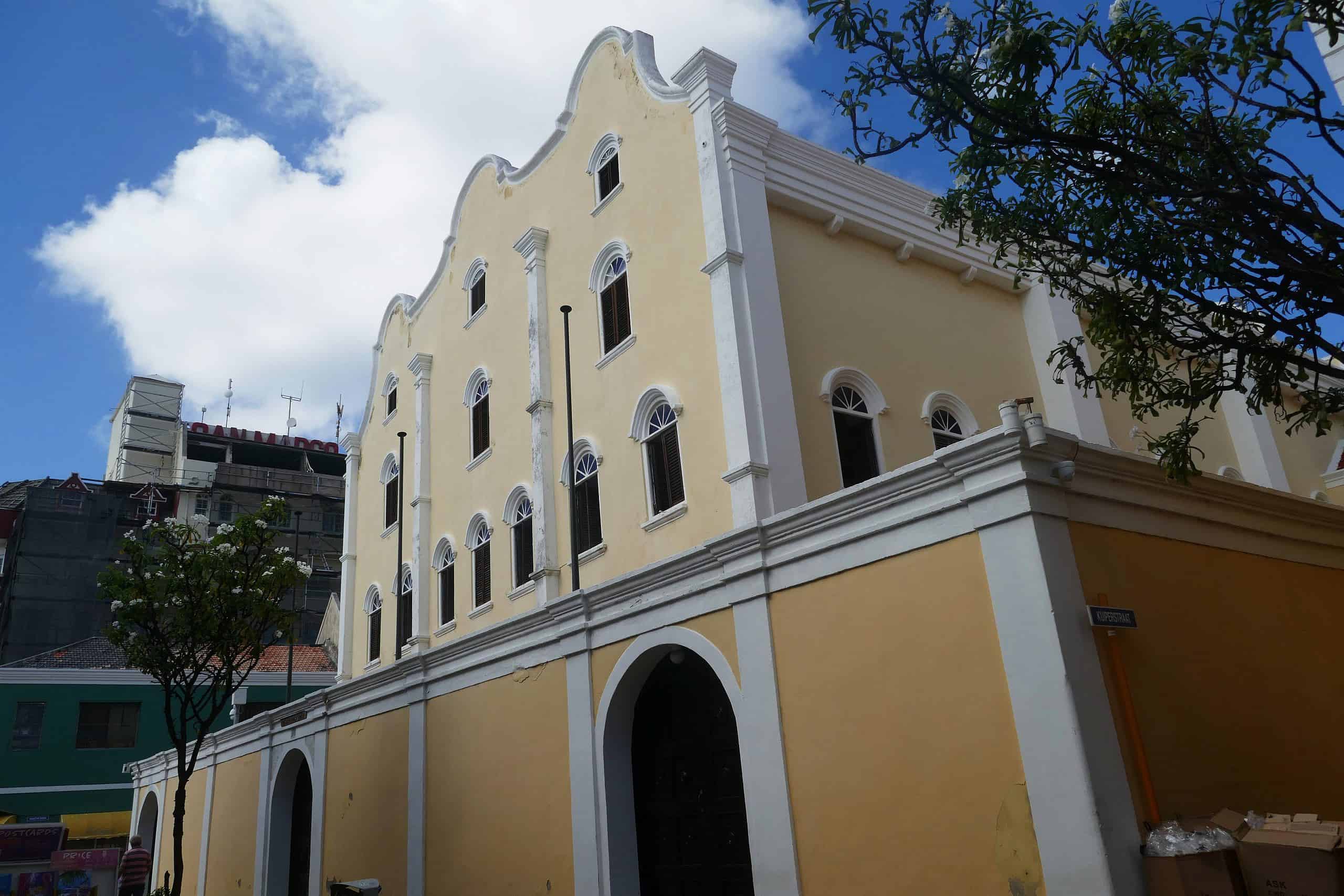
One of those is Mali de Waard, the synagogue’s president, who claims family roots on Curaçao to the 16th century and a family heritage that can be traced back 13 generations to Amsterdam, where her ancestors had fled the Inquisition on the Iberian Peninsula. Her daughter is part of her family’s 14th generation.
Locals like de Waard refer to Mikvé Israel-Emanuel as the “Snoa,” a sobriquet for “synagogue” in Papiamento, a Creole language influenced by African dialects and based on an amalgam of Portuguese, Spanish and a little Dutch. Etymologists suggest it is probably derived from the Portuguese word esnoga for “synagogue.”
Founded originally in 1651 as an Orthodox synagogue with Sephardic traditions by Dutch and Brazilian Jews, the first Torah scroll was donated by the Amsterdam Jewish community in 1659. A building for the community was purchased in 1674, and the present building was erected in 1730 with major renovations occurring in 1878 and 1974.
With its high vaulted ceiling, massive chandeliers, dark mahogany pews, interior pulpit and imposing holy ark that holds more than a dozen sefer Torahs, the Snoa has been often favorably compared to the Great Synagogue in Amsterdam.
Another central feature of the synagogue is the application of white sand on its floor, which is quite often raked to remove footprints. According to legend, converts to Christianity who still secretly practiced Judaism (conversos) used sand to muffle the sounds of footsteps and to deaden the volume of the prayers in the past that might have been overheard by eavesdroppers. The congregation placed sand on the floor at the time of its founding and today is one of only four in the world—all located in the Caribbean—to continue the practice. The others are found in Suriname, St. Thomas and Jamaica.
Congregants at Mikvé Israel-Emanuel additionally refer to the sand as an ever-present reminder of the 40 years of wandering by the Hebrews in the desert.
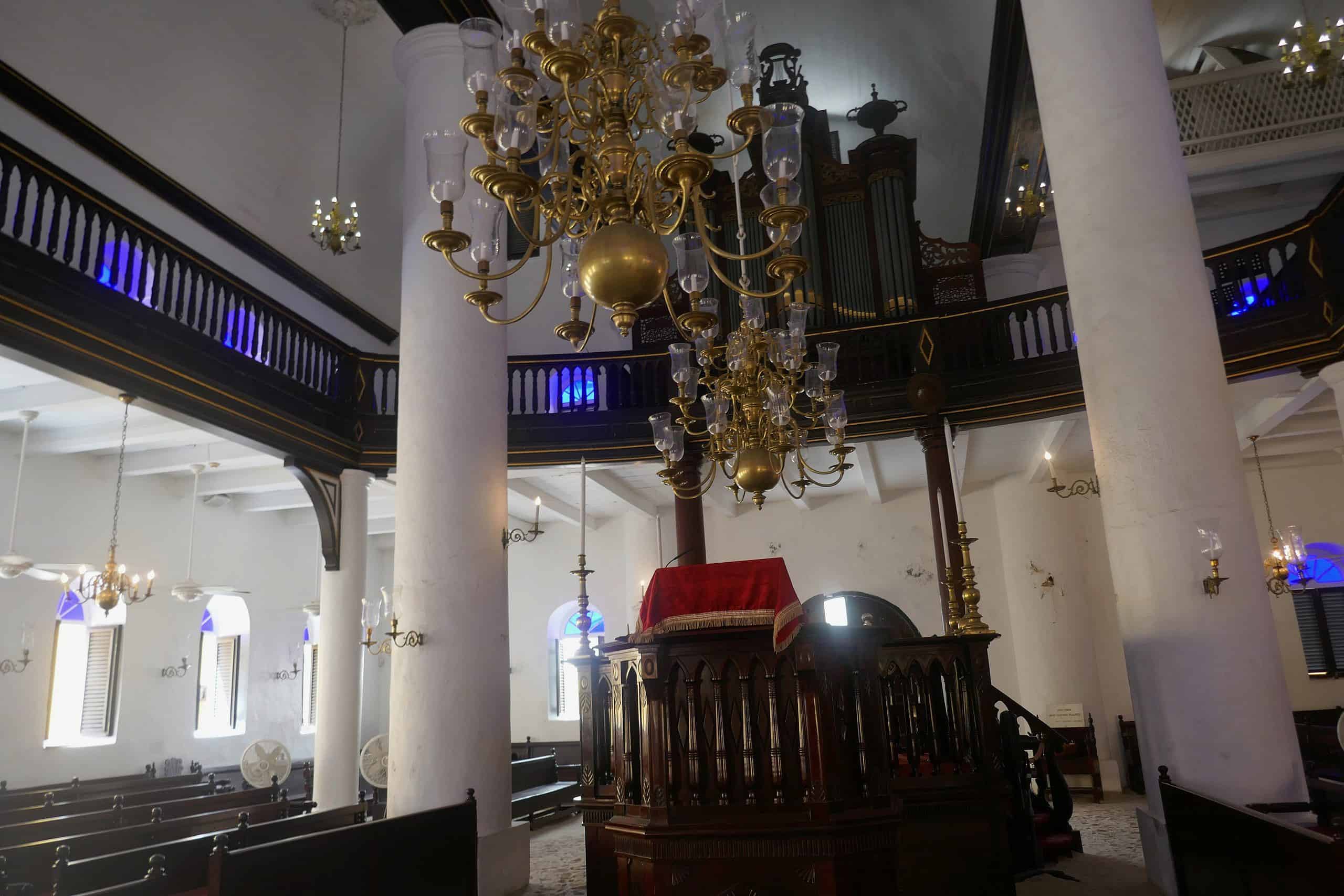
‘Internet wasn’t the best’
As the Kittrie family learned, the history of the synagogue and the story of the Jewish people in Curaçao requires more than the collective memory of its congregants. A small museum filled with artifacts is housed in an enclave of the building opposite the courtyard that leads to the sanctuary doors. Admission is $10 U.S. or 13 Dutch guilders. It is closed on Shabbat and other Jewish holidays.
Museum tours inform visitors of a schism in the middle 19th century when elements within Mikvé Israel broke away and formed their own Reform Jewish congregation, Emanu El. For more than 100 years, the two groups maintained separate synagogue buildings but due to dwindling attendance, the two reconnected, merging into the renamed Mikvé Israel Emanuel in 1964.
Today, the synagogue is part of the Reconstructionist movement associated with the Portuguese Dutch community and is fully egalitarian.
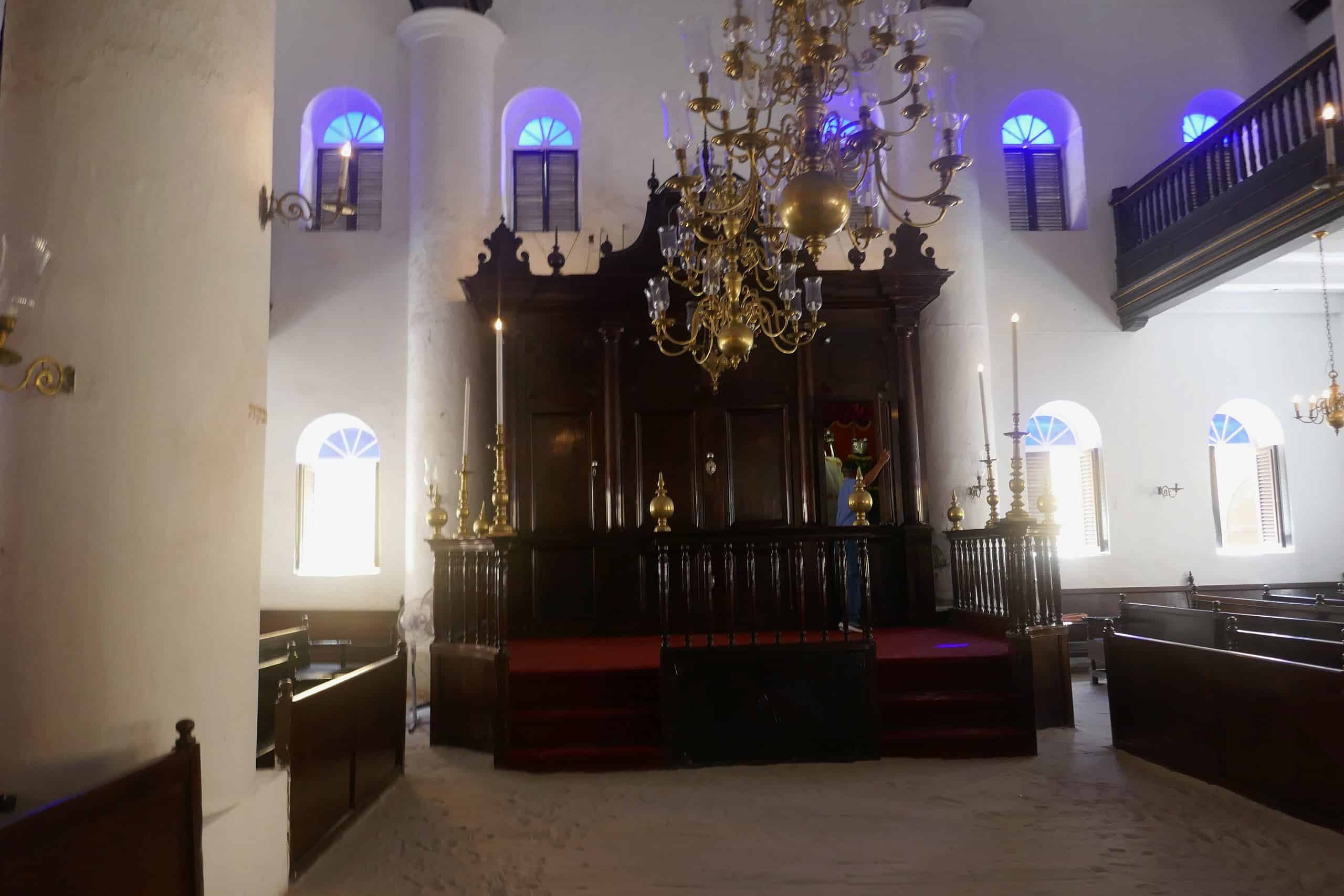
An imposing pipe organ built in Amsterdam in 1865 is housed on the sanctuary’s second floor. Occasionally still played at services, it is the oldest in the region and the second oldest in the Americas.
With Gabriella’s bat mitzvah looming large, the Kittrie family and instructor Roark worked with interim Rabbi Martin Hirsch. The rabbi was quite welcoming to them but informed them he had just accepted the permanent pulpit at the synagogue with a term that would start at the beginning of February.
Regrettably, he explained, his impending move would prevent him from officiating at the bat mitzvah, but he arranged to have rabbinical candidate Abi Oshins from Hebrew College in Boston to serve in his absence. Both Rabbi Hirsch and Oshins were pleased to work with Gabriella and Roark via several Zoom sessions in the weeks leading up to her arrival in Curaçao.
Sometimes, the challenges of working remotely had mixed results.
“One time when we called him there had been a storm on the island, and the Internet was entirely out,” Gabriella reported. “So we had to do one of the sessions by phone.”
Like any 13-year-old accustomed to high-speed Internet access, she was a bit jaded. “He does not have the best Wi-Fi,” she noted. “I could tell once we got there that the Internet wasn’t the greatest I’ve seen.”
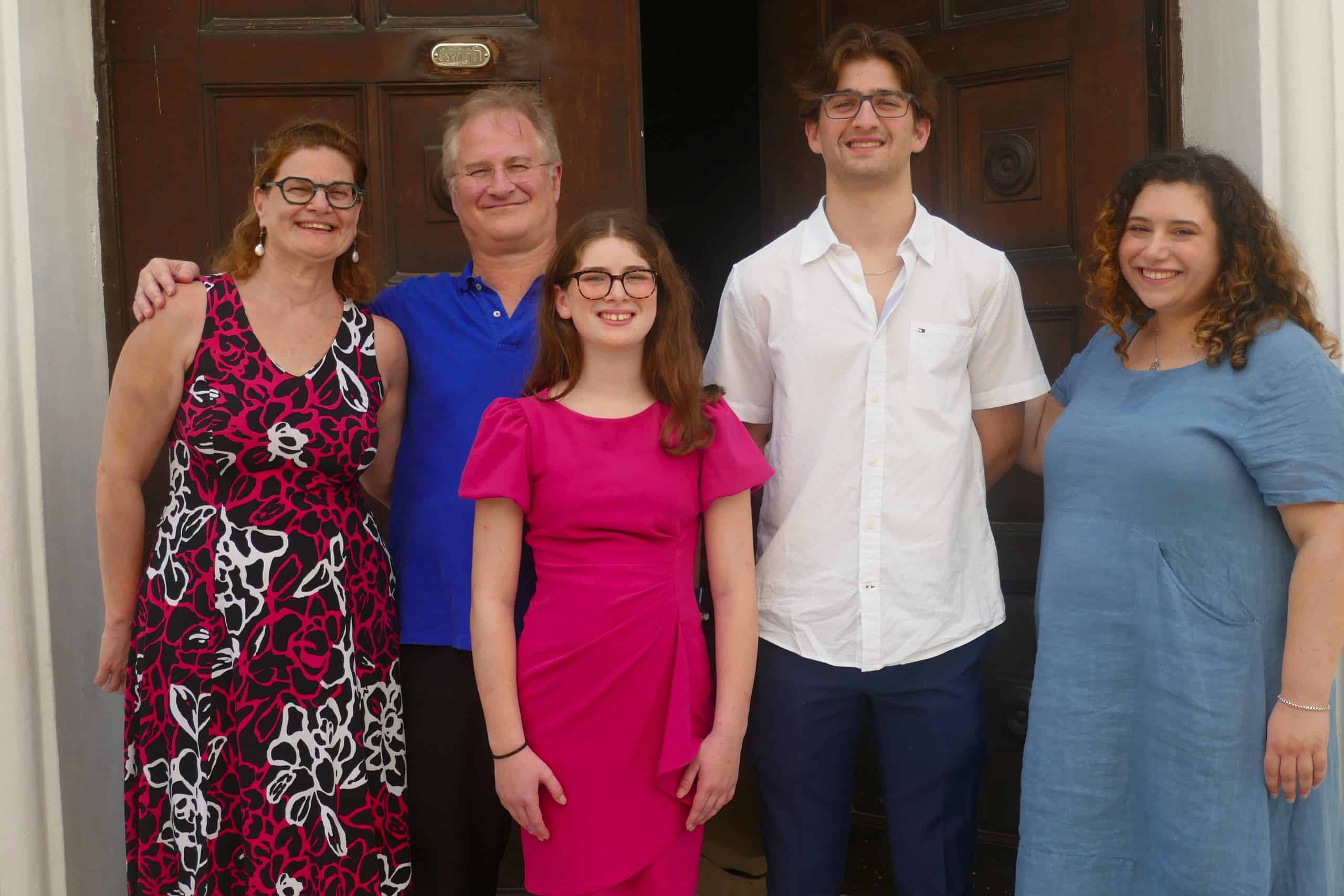
‘Intrigued by the heavy Hispanic influences’
Determined to make the destination bat mitzvah a success, but with less than two months until the event, the Kittries also began to reach out to secure lodging for their party of guests, which included Elizabeth’s sister, brother-in-law and three nephews. They decided to combine the bat mitzvah with a week of sightseeing on Curaçao for everyone to familiarize themselves with the important Jewish history of the island.
“Since my family is Mexican Jewish, I was particularly intrigued by the heavy Hispanic influences on the culture of Curaçao and particularly its Jewish community,” said Orde Kittrie. “I enjoyed learning how the Curaçao Jewish community was at one time the largest in the entire Western Hemisphere, and how it went on to inspire and help build the beginnings of the U.S. Jewish community.”
The synagogue is open regularly for Shabbat religious services on Friday nights at 6:30 p.m. and Saturday mornings at 10 a.m. as well as for all Jewish holidays. Even though there is tight security, the dress code is casual with slacks and dress shirts or polo shirts required for men, and slacks or skirts with blouses suggested for women. Head coverings are required for men and suggested for women.
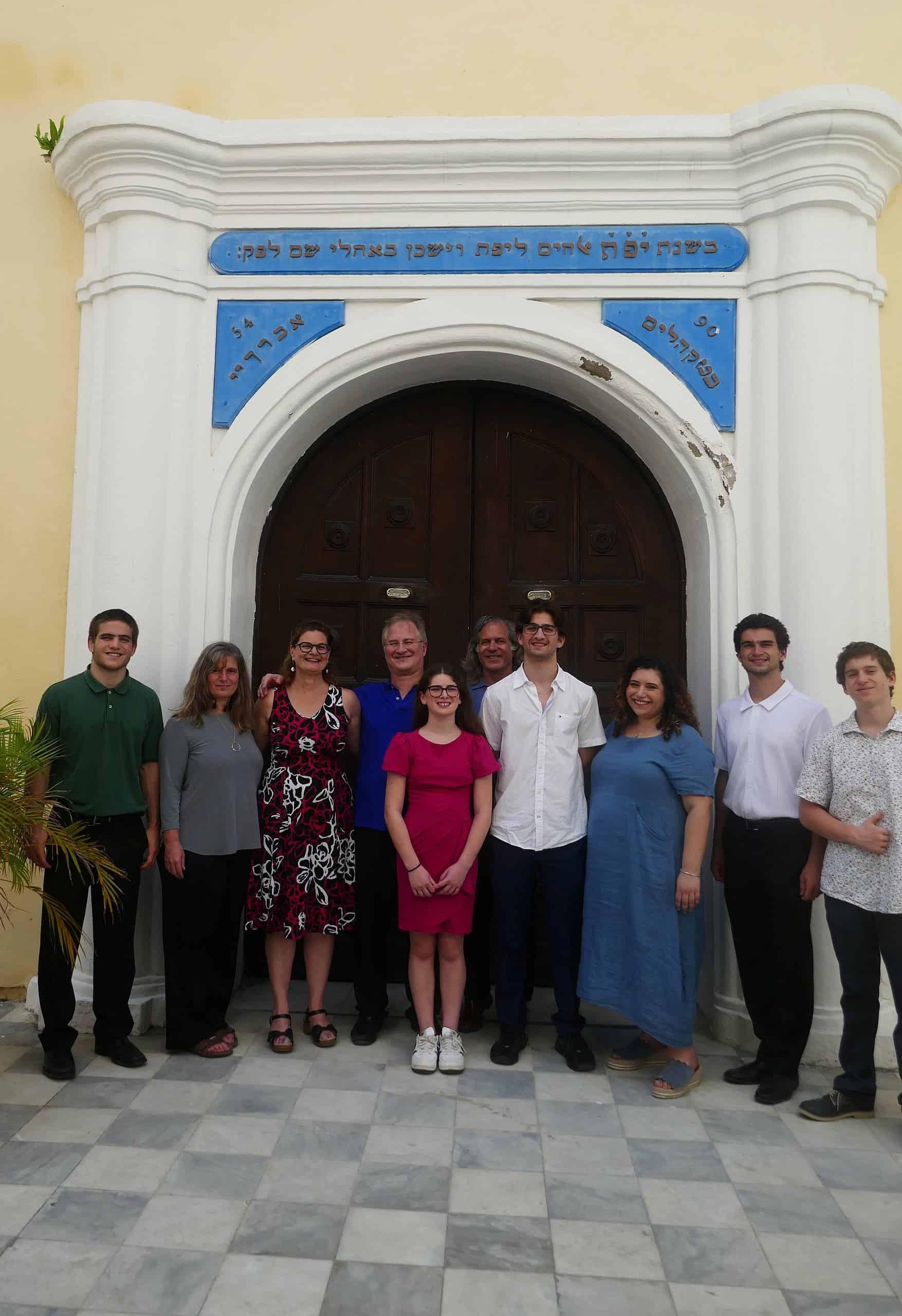
Most importantly, prohibitions are enforced at the door on immodest clothing that might expose shoulders, for torn or faded jeans and open-toed footwear, especially flip-flops.
Gabriella sang her Torah portion, recited various prayers and delivered her d’var Torah during the service, which followed the Sephardi tradition and featured blessings in Portuguese. A short kiddush for members and visitors was held after the services had concluded.
After the bat mitzvah had concluded, Gabriella was asked to compare between her brother’s bar mitzvah and her event. She acknowledged that she had been happy to go to Israel, but “I like Curaçao better,” she reflected. “I hate the cold. In the middle of the winter, I don’t know if I want to go somewhere cold. It’s not really my thing.”
Initially, when she learned of the trip to Israel being canceled, she was heartbroken, said Gabriella. “I was upset because I couldn’t get to Israel, and we had relatives and friends there, but I was definitely happy” when the family decided on Curaçao “because it wouldn’t be the same as my brothers’ [milestones].”
In addition to the balmy weather and the unique aspects of the celebration, Gabriella emphasized her delight in being in Curaçao. “It’s very historical, and it seemed like it had a great Jewish community,” she added.
“Also, for me, I’m really into beaches, and I’ve always wanted to go the Caribbean,” Gabriella noted. “And what’s better than getting a tan?”
This article originally appeared in the Crescent City Jewish News.


























